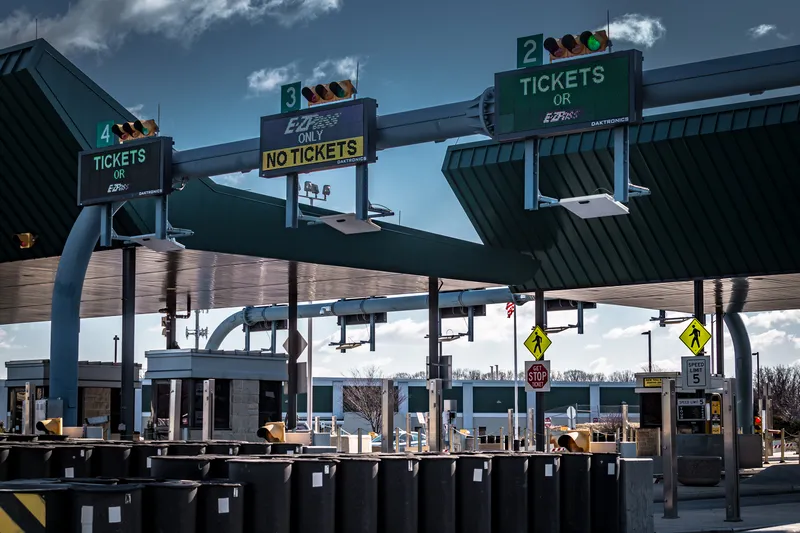The Northern Capital Highway (NCH) consortium has been named the preferred bidder in the tender for the central section of St Petersburg’s Western High-Speed Diameter (WHSD) project. Should NCH win the tender process it will build and then operate the entire stretch of the toll road. The consortium comprises VTB Capital and Gazprombank from Russia in partnership with Italian company Astaldi and Turkish firm Ictas Insaat.
April 18, 2012
Read time: 3 mins
RSSThe Northern Capital Highway (NCH) consortium has been named the preferred bidder in the tender for the central section of St Petersburg’s Western High-Speed Diameter (WHSD) project. Should NCH win the tender process it will build and then operate the entire stretch of the toll road. The consortium comprises VTB Capital and Gazprombank from Russia in partnership with Italian company Astaldi and Turkish firm Ictas Insaat.
The WHSD is a key project for St Petersburg as it will help the city to develop its role as a major international transport hub. The new link is of major significance and will also be the first toll road operated within city limits in Russia, while it is Russia’s largest PPP project.
NCH’s bid proposes a minimal WHSD toll revenue guarantee of US$336.6 million/year (€234 million/year). Should the project revenue exceed this amount, NCH will pay 90% of the excess to the city. It is expected that once the road is open to traffic, toll revenues will soon reach the minimum income guarantee level. This would rule out the need for the city authorities to provide funds to support the project.
WHSD’s central section is the most technically complex to build part of the road and includes three bridges, two of which will feature a cable-stayed design, and a tunnel.
The expected investment is estimated by NCH at approximately $4.3 billion (€3 billion) and will be financed through a combination of debt and equity, as well as a federal grant of some $1.776 billion (€1.234 billion). The consortium has already received debt financing proposal from Russian banks VTB and Gazprombank and NCH hopes to sign the PP agreement with St Petersburg in December 2011. Infrastructure investment is one of VTB Capital’s strategic priorities. The Western High-Speed Diameter project is in line with VTB Capital’s plans to develop infrastructure projects in Russia utilising public-private partnership mechanisms. VTB Capital is also the lead investor in the Northern Capital Gateway consortium which has won the deal to modernise and operate Pukovo Airport in St Petersburg.
Meanwhile, construction of a complex of structures protecting St Petersburg from floods has now been completed. The complex is 25.4km long. The protective dam connects the Northern and Southern shores of the Gulf of Finland across Kotlin Island, with a road on the dam forming the last section of a ring road. Construction of the dam began in 1979 but work was interrupted when the project was 70% completed in 1987. Work resumed in 2005. The investment in the project stood at $34.36 million (€24.06 million) in the 1979-2005 period and $3.79 billion (€2.64 billion) since 2005.
The WHSD is a key project for St Petersburg as it will help the city to develop its role as a major international transport hub. The new link is of major significance and will also be the first toll road operated within city limits in Russia, while it is Russia’s largest PPP project.
NCH’s bid proposes a minimal WHSD toll revenue guarantee of US$336.6 million/year (€234 million/year). Should the project revenue exceed this amount, NCH will pay 90% of the excess to the city. It is expected that once the road is open to traffic, toll revenues will soon reach the minimum income guarantee level. This would rule out the need for the city authorities to provide funds to support the project.
WHSD’s central section is the most technically complex to build part of the road and includes three bridges, two of which will feature a cable-stayed design, and a tunnel.
The expected investment is estimated by NCH at approximately $4.3 billion (€3 billion) and will be financed through a combination of debt and equity, as well as a federal grant of some $1.776 billion (€1.234 billion). The consortium has already received debt financing proposal from Russian banks VTB and Gazprombank and NCH hopes to sign the PP agreement with St Petersburg in December 2011. Infrastructure investment is one of VTB Capital’s strategic priorities. The Western High-Speed Diameter project is in line with VTB Capital’s plans to develop infrastructure projects in Russia utilising public-private partnership mechanisms. VTB Capital is also the lead investor in the Northern Capital Gateway consortium which has won the deal to modernise and operate Pukovo Airport in St Petersburg.
Meanwhile, construction of a complex of structures protecting St Petersburg from floods has now been completed. The complex is 25.4km long. The protective dam connects the Northern and Southern shores of the Gulf of Finland across Kotlin Island, with a road on the dam forming the last section of a ring road. Construction of the dam began in 1979 but work was interrupted when the project was 70% completed in 1987. Work resumed in 2005. The investment in the project stood at $34.36 million (€24.06 million) in the 1979-2005 period and $3.79 billion (€2.64 billion) since 2005.









